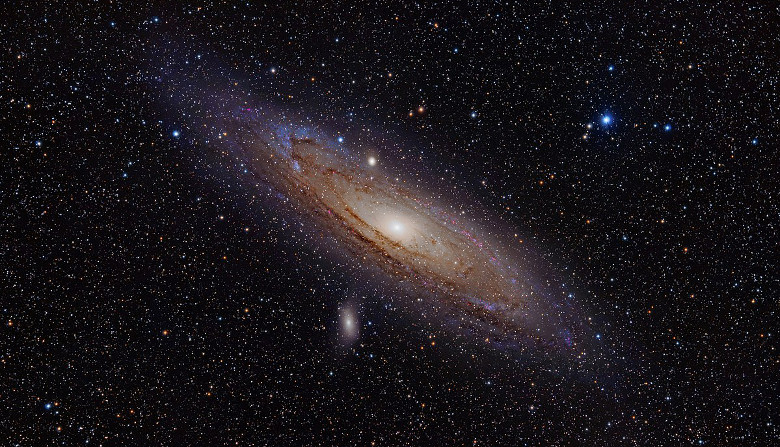A new study into our nearest big galactic neighbour, the Andromeda galaxy, has revealed that it is not quite the giant astronomers once thought it was and that is contains far less dark matter than previously estimated.
Also known as Messier 31 or M31, the Andromeda galaxy is approximately 780 kiloparsecs (2.5 million light years) from Earth, spans approximately 220,000 light years and is the largest galaxy in our Local Group. After observations by the Spitzer Space Telescope in 2006, Andromeda was thought to be two to three times the size of the Milky Way with a population of around one trillion stars.
However, after a new and novel technique was implemented by Dr Prajwal Kafle, from The University of Western Australia, Andromeda is now determined to be around 800 billion times heavier than the Sun – a mass that is on par with our Galaxy.
The new technique works on a similar principle to calculating how fast a rocket needs to travel in order to escape the Earth's gravitational pull. But instead of using a rocket, the technique uses the speed required by a star to escape a galaxy.
"Our home galaxy, the Milky Way, is over a trillion times heavier than our tiny planet Earth, so to escape its gravitational pull we have to launch with a speed of 550 kilometres per second (km/s),” said Kafle. A rocket escaping from Earth on the other hand, needs to achieve a speed of 11 kilometres per second to make it into space.
The research also questions previous estimates about the amount of dark matter the galaxy contained. "By examining the orbits of high speed stars, we discovered that this galaxy has far less dark matter than previously thought, and only a third of that uncovered in previous observations," added Kafle.
The Milky Way and the Andromeda galaxy are expected to collide in roughly 4.5 billion years and this titanic of mergers is likely to produce a giant elliptical galaxy. It is also expected that our galaxy “will eat” two nearby dwarf galaxies, the Large and Small Magellanic Clouds sometime in the future too.
"It's really exciting that we've been able to come up with a new method and suddenly 50 years of collective understanding of the local group has been turned on its head,” explained Kafle.
"We had thought there was one biggest galaxy and our own Milky Way was slightly smaller but that scenario has now completely changed. It completely transforms our understanding of the local group.”











